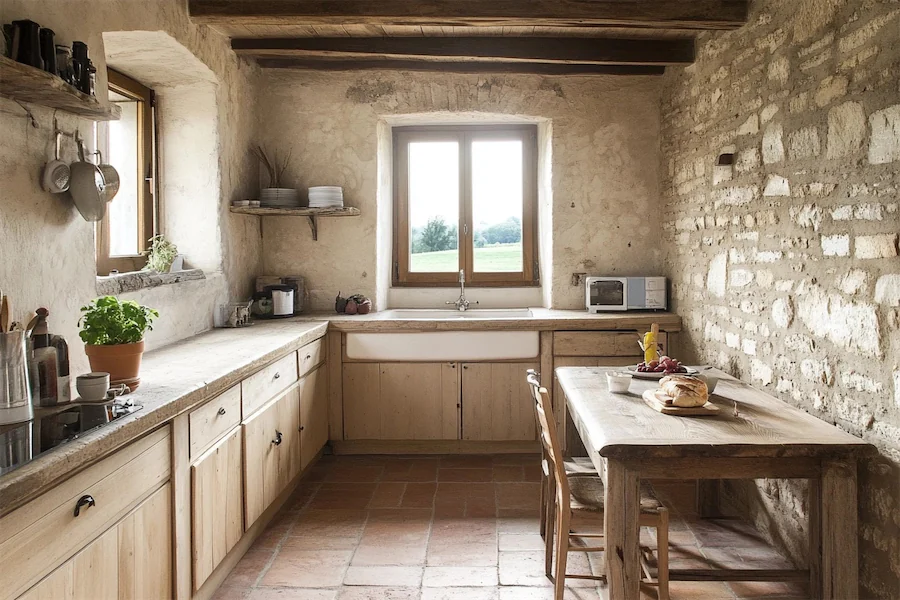An Italian rustic kitchen embodies the warmth and charm of traditional Italian countryside homes, emphasizing natural materials, earthy color palettes, and a welcoming atmosphere. This article explores the key features, applications, and considerations for designing an Italian rustic kitchen.
Key Features of Italian Rustic Kitchens
- Natural Materials: Utilizing natural wood finishes, stone or tile flooring, and exposed ceiling beams creates an authentic rustic ambiance. Wrought iron fixtures further enhance the traditional aesthetic.
- Warm Color Palette: Incorporating warm, earthy colors such as terracotta, olive green, and golden yellow reflects the Italian landscape and adds to the kitchen’s inviting feel.
- Open Shelving: Displaying Italian ceramics, pottery, and kitchenware on open shelves adds character and accessibility, contributing to the kitchen’s functional charm.
- Farmhouse Sink: A large, apron-front sink made of materials like porcelain or stone is both practical and in keeping with rustic design elements.
- Wood-Burning Oven: Incorporating a wood-fired oven or stovetop pays homage to traditional Italian cooking methods and serves as a focal point in the kitchen.
Applications of Italian Rustic Kitchens
- Residential Homes: Incorporating rustic Italian design elements can transform a standard kitchen into a warm and inviting space, enhancing the overall aesthetic appeal.
- Themed Restaurants: Designing kitchens in Italian-themed restaurants that reflect traditional rustic architecture can provide an authentic culinary experience for patrons.
- Cultural Centers: Showcasing Italian rustic kitchen designs in cultural exhibits can educate visitors about Italy’s rich heritage and architectural traditions.
Considerations When Designing an Italian Rustic Kitchen
- Material Selection: Opt for authentic, natural materials that align with traditional Italian construction to maintain cultural authenticity and environmental harmony.
- Integration of Modern Amenities: While preserving traditional aesthetics, ensure the kitchen meets contemporary standards of functionality and convenience, such as incorporating modern appliances discreetly.
- Spatial Layout: Design the kitchen to facilitate efficient workflow while maintaining the open and airy qualities characteristic of rustic Italian architecture.
- Cultural Sensitivity: Respect the historical and cultural significance of Italian rustic design principles, ensuring that adaptations honor traditional architecture and practices.
Conclusion
An Italian rustic kitchen offers a harmonious blend of tradition, natural materials, and functional design. By embracing the principles of rustic Italian architecture, one can create a kitchen space that is both culturally rich and practically efficient, reflecting the timeless beauty of Italy’s countryside homes.
